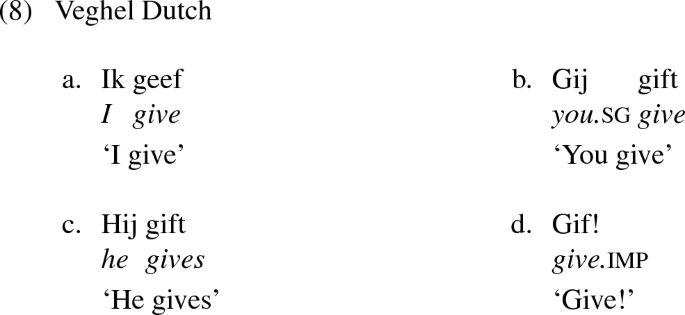


In Greek, two dots, called a 'trema', were used in the Hellenistic period on the letters ι and υ, most often at the beginning of a word, as in ϊδων, ϋιος, and ϋβριν, to separate them from a preceding vowel, as writing was scriptio continua, where spacing was not yet used as a word divider. Languages such as Dutch, Afrikaans, Catalan, French, Galician and Spanish make regular use of the diaeresis. In English language texts it is perhaps most familiar in the spellings ' naïve', ' Noël', and ' Chloë', and is also used officially in the name of the island Teän. Nevertheless, it is still used by the US magazine The New Yorker. In British English this usage has been considered obsolete for many years, and in US English, although it persisted for longer, it is now considered archaic as well. For example, in the spelling 'coöperate', the diaeresis reminds the reader that the word has four syllables co-op-er-ate, not three, '*coop-er-ate'. The diaeresis diacritic indicates that two adjoining letters that would normally form a digraph and be pronounced as one sound, are instead to be read as separate vowels in two syllables. German: Umlaut is the German name of both the sound rule also known as i-mutation and the corresponding diacritic. The word ' trema' ( French: tréma), used in linguistics and also classical scholarship, is from the Greek trē̂ma ( τρῆμα) and means a 'perforation', 'orifice', or 'pip' (as on dice), thus describing the form of the diacritic rather than its function. The word 'diaeresis' is from Greek diaíresis ( διαίρεσις), meaning 'division', 'separation', or 'distinction'. 3.4 Use of the umlaut for special effect.3.3 Borrowing of German umlaut notation.For example, in Albanian, ë represents a schwa. The same mark, placed above or below the letter, is used in other contexts and for different purposes and meanings. For example, U+00E4 ä LATIN SMALL LETTER A WITH DIAERESIS represents both a-umlaut and a-diaeresis. Nevertheless, in modern computer systems using Unicode, the umlaut and diaeresis diacritics are encoded identically. These two diacritics have different origins, the diaeresis being considerably older.

Neither of these phenomena occur in English, except in loanwords (like naïve) or for stylistic reasons (as in the Brontë family or Mötley Crüe). The "umlaut" diacritic, in contrast, indicates a sound shift phenomenon – also known as umlaut – in which a back vowel becomes a front vowel.The "diaeresis" diacritic is used to mark the separation of two distinct vowels in adjacent syllables when an instance of diaeresis (or hiatus) occurs, so as to distinguish from a digraph or diphthong.The "diaeresis" and the "umlaut" are diacritics marking two distinct phonological phenomena. Their appearance in print or on screen may vary between typefaces but rarely within the same typeface.
Html a with umlaut code#
In computer systems, both forms have the same code point (binary code). They both consist of two dots ¨ placed over a letter, usually a vowel when that letter is an i or a j, the diacritic replaces the tittle: ï. The diaeresis ( / d aɪ ˈ ɛr ə s ɪ s, - ˈ ɪər-/ dy- ERR-ə-sis, - EER- also known as the trema) and the umlaut ( / ˈ ʊ m l aʊ t/) are two different diacritical marks that (in modern usage) look alike. For the notations ⟨ ⟩, / / and used in this article, see IPA Brackets and transcription delimiters. This page uses orthographic and related notations.


 0 kommentar(er)
0 kommentar(er)
